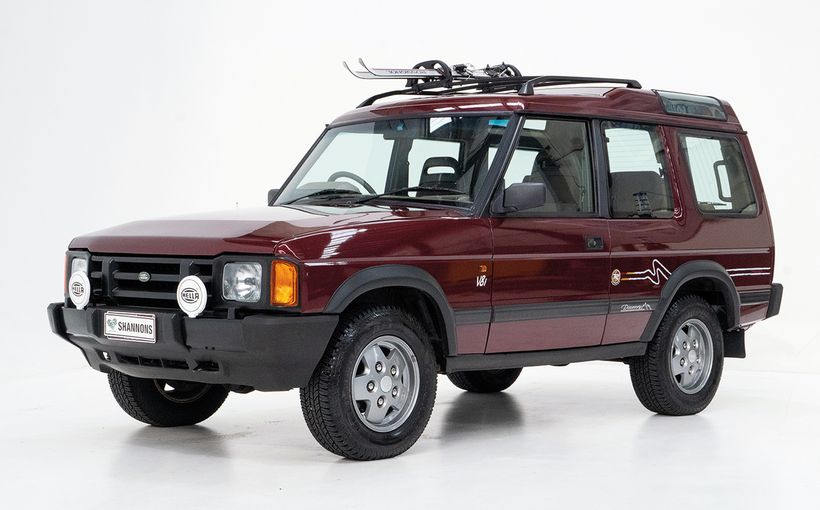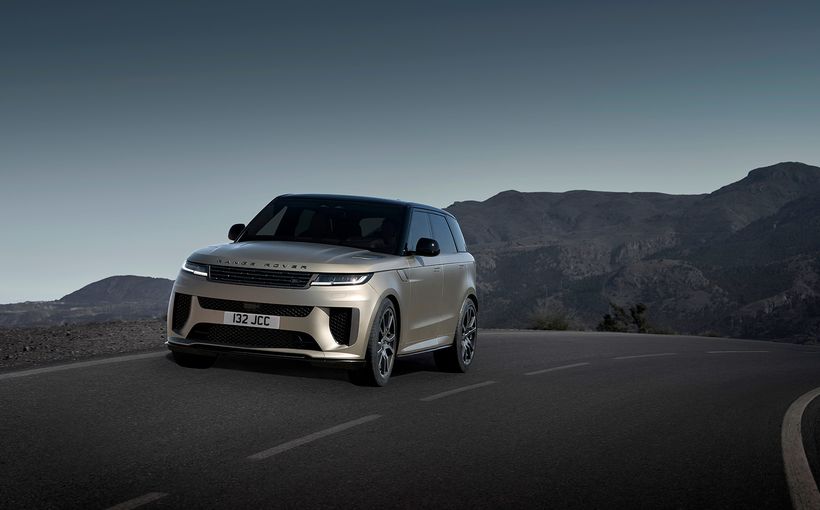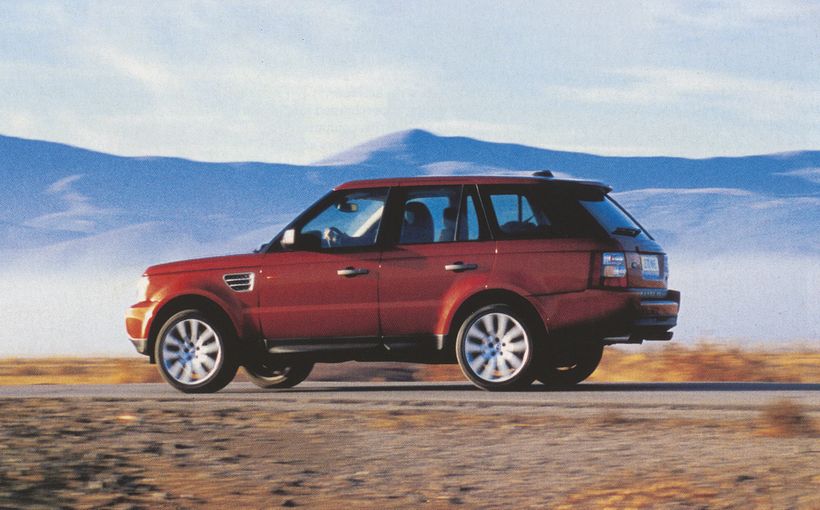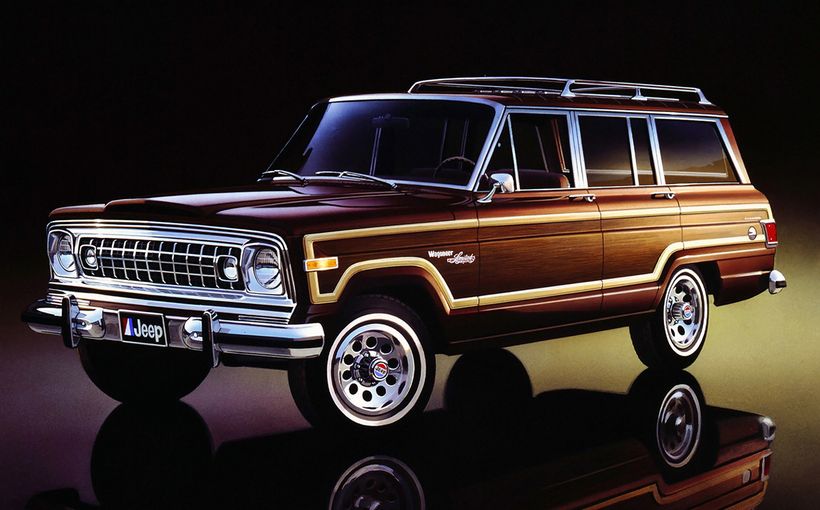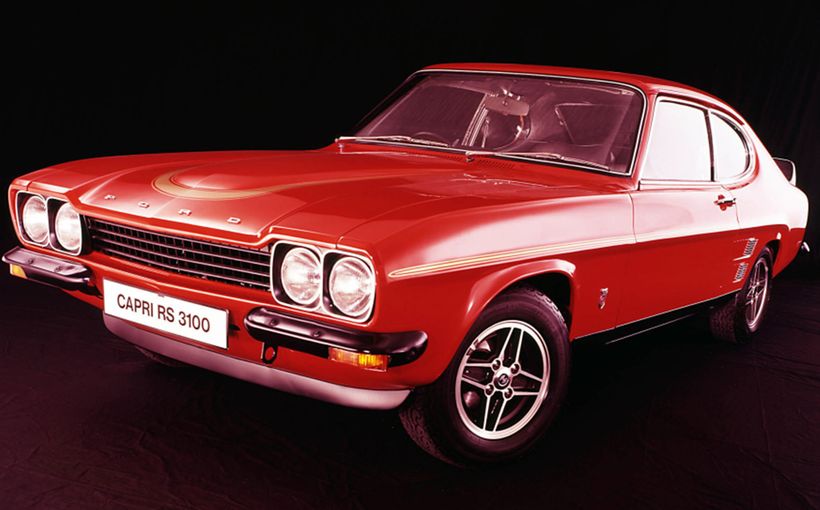Range Rover: a winner from London to Sydney, Paris to Dakar

Prior to the Range Rover’s release in 1970 ‘all-terrain’ was the almost exclusive domain of noisy, low-geared, harsh-riding and uncomfortable 4x4s, as characterised by its Land Rover stablemate. However, the Range Rover’s supple four-coil suspension, powerful V8 engine, permanent four-wheel drive, four-wheel disc brakes and plush car-like interior caused a seismic shift in automotive cross-country travel - including motor sport.
Here was a new breed of vehicle, the progenitor of the modern luxury SUV, which could not only tackle the toughest tracks and off-road obstacles with unprecedented levels of occupant comfort. It was also an outstanding long-haul tourer that could cover vast distances with admirable ease regardless of weather and road conditions.
It was these enviable attributes which ensured that the first-generation Range Rover would also be thrust into competition use, primarily in marathon events which played to its strengths.
Highlights of these global activities include an Aussie victory in the 4x4 division of the 1977 London-Sydney Rally. This was achieved by the Leyland Australia-backed crew of Evan Green and John Bryson in a 4.4 litre P76-engined Range Rover, which is the main focus of this story.

However, mention should also be made of other major Range Rover achievements which started in 1971-72 with a famous expedition from Anchorage, Alaska to Cape Horn, Argentina down the vast Pan-American Highway. This included conquering the infamous Darien Gap – the highway’s missing link comprising more than 400km of roadless and impenetrable (well, almost) jungle between Panama and Columbia. Although considered all but impossible to traverse by vehicle, the mighty Range Rover did it, becoming the first to cross the three Americas north-south via the Gap.
It also holds the distinction of winning the car division in the first Paris-Dakar Rally in 1979, a feat it managed to repeat two years later. The versatility and extreme all-terrain ability of the ‘Rangie’ was also showcased in other competitions like the annual Camel Trophy global off-road adventure challenge, in which it excelled in the jungles of Sumatra and Papua New Guinea.

1977 London-Sydney Rally
The second London to Sydney epic, held a decade after the first, was the longest car rally in history and rightly billed as the world’s toughest, because it was significantly longer and more demanding than the original. In fact, it was almost twice the length, covering more than 30,000km across three continents (Europe, Asia and Australia), including three sea crossings.
It was also timed to celebrate naming rights sponsor Singapore Airlines’ 30 years of operation, starting at London’s Covent Garden on August 13 and finishing at Sydney’s Opera House on September 28. And, unlike the 1968 event, it allowed four-wheel drives.
Picking the right vehicle was a challenge, particularly given that the route of the third and final Australian leg was kept secret until the event started. This started people thinking about how tough the unknown Aussie section would be and if indeed a four-wheel drive off-roader would be a better choice than a conventional two-wheel drive road car.
The first London to Sydney was no real guide because most of its route had been on relatively good roads, particularly in Australia. Better guides were considered to be the 25,000km 1970 London-Mexico World Cup Rally and the 17,000km 1974 London-Sahara-Munich World Cup Rally.

“In the Mexico event the cars which reached the finish were for the most part a collection of limping cripples. It was conceivable that a stronger but slower ‘tortoise’ could have caught these ‘hares’”, observed Barry Lake in Off Road Australia magazine.
“In the London-Sahara-Munich marathon, sand dunes in the Sahara Desert played a major role in selecting the final placegetters. While conventional two-wheel drive cars had taken the placings in Munich, it had been demonstrated by Californian Jeep dealer Brian Chuchua that his Baja-style (CJ6) Jeep V8 with big baggy tyres and plenty of power was far faster than any normal car in such tough going and had sheer brute strength on its side as well.”
Although Chuchua’s Jeep was later eliminated in a freak road accident in crash-prone Turkey, its performance against conventional two-wheel drive cars in the 1974 event up until that point - particularly in north Africa - had been impressive and no doubt planted seeds in rival minds when choosing a vehicle for the 1977 London-Sydney.
One of those was Aussie motoring journalist and accomplished rally driver Evan Green, who with navigator John Bryson had been leading the 1974 World Cup Rally in a Leyland P76 until faulty route instructions left them and numerous other competitors perilously lost in the Sahara. Escaping the towering sand dunes placed enormous strain on the Aussies’ car which led to a front suspension failure and, with that, any chance of victory.

Engineered to win
Green was one of the first London-Sydney entrants to choose the 4x4 route, with work on his new mount commencing soon after the conclusion of the 1974 World Cup event.
The choice of a Range Rover made sense, given Green’s long-standing ties with BMCA/Leyland Australia and a corporate desire to finish what it had started in backing Green’s P76 campaign. A little-known fact is that Green originally wanted to drive the then-new Range Rover (at the time under secret development by Rover) in the 1970 London-Mexico World Cup, but British Leyland management had rejected the proposal.
For the 1977 London-Sydney, though, Leyland’s Australian branch could not have been more accommodating. Green said the Range Rover offered a good compromise between the speed and ‘liveability’ of a conventional car and the body-on-frame ruggedness and off-road ability of a 4x4.
Leyland Australia and Endrust (an anti-corrosion treatment for car bodies) jointly backed the Aussie Range Rover campaign as they had done with the World Cup P76. Leyland supplied two Range Rovers. One was used by Green’s navigator and experienced car preparer John Bryson in conducting a series of exhaustive tests with Endrust’s Doug Quayle, clocking up thousands of kilometres through outback Australia and the remote west coast to unearth any weaknesses and determine the best specification. This test mule was also the official service unit for the Green/Bryson entry in the event.

The other Range Rover became Leyland’s hand-built London-Sydney challenger. Armed with Bryson’s test information, ace fabricator Roy Cullen and engine specialist Noel Delforce (who had both worked in Leyland’s Experimental department) stripped it back to a bare body and chassis frame before separating the two. Any areas which showed signs of stress during the outback testing were reinforced and all critical components were crack-tested and X-rayed to ensure there were no structural flaws during this body-off-frame stage.
There was also an emphasis on saving weight, because a heavy vehicle uses more fuel and is harder on tyres, brakes and suspension – not what you want in a 30,000km marathon. The Range Rover, with its mostly aluminium-skinned body, had an inherent advantage. Even so, all unnecessary weight was removed including the standard interior trim and dashboard, window glass (except the laminated windscreen), winder mechanisms and rear screen wiper.
The side and rear glass were replaced with much lighter Makrolon, an unbreakable clear polycarbonate. These were either fixed or (in the doors) could be simply pushed up and down. The tailgate screen was kept clear of dust and mud by C-pillar covers converted to air scoops.
Even the door handle mechanisms were removed and replaced with small levers on the locks. The bonnet and tailgate (the Range Rover’s only steel panels) were remade in lightweight fiberglass and even the roof gutters were trimmed off. The heavy standard steel bumpers were replaced with lighter aluminium structures, including a stout bull bar equipped with Hella driving lights to boost front-end protection and night driving capabilities.

“The 3.5 litre Rover V8 was replaced by the 4.4 litre aluminium engine from the Leyland P76,” Green explained at the time. “It fits easily into the Range Rover, being a development of the Rover motor. There is not much difference in power output but torque is improved substantially and torque (pulling or tugging power) is more important in a marathon event. Fitting the P76 was not exactly flying in the face of Leyland engineers, because the Australian company had planned doing just that to the Range Rover had the P76 remained in production.”
So, plenty of V8 grunt, from an engine hand-built by Noel Delforce who also built Green’s P76 engine for the 1974 World Cup. It was fed by three fuel tanks; two mounted within the chassis rails under the front seats with a third installed at the back, with a combined driving range under rally conditions of 1000km.
The rest of the drivetrain, including the dual-range permanent four-wheel drive with locking centre diff and live front and rear axles, was all standard Range Rover hardware. It was also carefully stripped down, inspected and reassembled as well as all suspension and brake components.
The only upgrades were fitting two Bilstein gas pressure shocks per wheel, in true Baja tradition, while the brakes were fitted with Girlock competition pads and braided hydraulic lines to provide extra protection from debris.

Inside was a stout full cabin roll cage and the dash replaced by a large hinged panel allowing quick access to all wiring looms for the Halda distance recorder, VDO instrumentation and various switches. There was also a Motolita leather-rimmed sports steering wheel, lightweight Recaro rally recliners and a Mark IV air conditioner to keep the crew comfortable and pressurise the cabin to minimise dust intrusion.
The rear of the cabin had water tanks on each side for drinking and emergency supplies plus a short foam rubber bed for Green to use on transport sections as he could not get quality sleep in a seat. There were also bins to store food and documents, first-aid and tool kits, recovery gear and the reassurance of an automatic 12lb Chubb fire extinguisher.
Finished in a gleaming coat of white Dulux with red and blue highlights, including an Australian flag motif on the bonnet, the Aussie-built and crewed Range Rover was an impressively fast and capable marathon machine as discovered by Chequered Flag magazine during a brief test drive before it was shipped to London.
“Gearing is low, the resultant acceleration fast! The 4.4 litre motor is a slow-revving, high torque piece of machinery, 160km/h equals 5000rpm. Cruising is a comfortable 4500rpm. The power band is broad, torque pulling the vehicle away at around 1800rpm. The back can be ‘hung’ at any more than 2500rpm in third, the Bridgestone 702s mounted on Sunraysia wheels biting into the loose surface. The beast feels big, it looks bigger. But it is directional, the car inspires confidence.”

Horror stretches and other fantasies
Green and Bryson were not the only competing crew to take advantage of the allowance for 4x4 vehicles. Out of a total of 69 starters in the 1977 London-Sydney, which featured factory-assisted teams from Mercedes-Benz, Peugeot, Citroen and Fiat, 10 of them were 4x4s.
Jeep was the most popular choice, represented by Chuchua’s pair of thundering V8-powered CJ6 monsters, two Cherokee wagons (one USA, the other UK) and from Australia a Chev V8-engined CJ5 backed by Off Road Australia magazine. Range Rovers were next on the popularity list with four entries (two from Australia, one each from the UK and France) plus a lone Subaru 1600cc 4WD wagon with an all-Japanese crew.
“Odds in London were that off-road 4-wheel-drive vehicles held the greatest advantage and were the best bet to withstand the pounding of the Iranian and Australian deserts,” wrote Off Road Australia editor Wayne Cantell who was quietly confident that he’d made the right choice of vehicle.
However, much to Cantell’s disappointment and his four-wheel drive rivals, there would be none of the much-rumoured horror stretches in which the 4x4s would be able to exploit their all-terrain advantages. His summation was that the vast majority of the 30,000km distance was held on either paved or relatively smooth gravel and dirt roads, which gave a clear advantage to European touring sedans (like Andrew Cowan’s winning Mercedes 280E) and dictated that the off-road crowd would have to take a back seat from the start.

The first 12 days spanned 11 countries through Europe, Turkey and the Middle East to India and completion of the first leg. By the time the rally reached Greece, nine of the 69 starters had already retired but the highest-placed 4x4 was the Green/Bryson Range Rover in 15th place. In Turkey the Off Road Australia Jeep was forced off the road by a truck and crashed out of the event, which was eerily similar to Chuchua's demise in the 1974 World Cup Rally.
By the time the field reached Madras on India’s southern coast at the end of the first leg, there were less than 50 crews remaining. The cars were loaded onto a ship bound for Penang and the second leg, which comprised an 800km route down the Malaysian peninsula to Singapore. This included two special stages through rubber plantations and an old mine site in which many cars lost their way.
After several days in Singapore, the surviving cars were shipped to Perth for the massive 13,000km third and final leg across Australia. Shipping problems delayed the start of the Australian leg by two days. However, as the original finishing date in Sydney could not be moved, event organisers got the approval of teams to increase the average speeds and savagely cut the number of rest stops.
The nightmare result was 13,200 kilometres in just seven days and 16 hours – that’s more than 1,700 kms a day, or an average speed of 72 km/h for 184 hours! It was a fearful test of physical and mechanical endurance, yet the top two-wheel drive sedans were more than up to the task and continued to set a hot pace the high-riding four-wheel drives could not match.

From Perth the course headed north-east across the Great Victoria Desert to Uluru and Alice Springs.By that stage the highest placed 4x4 was the Range Rover crewed by Frenchmen Jacky Prive and Jacques Briy in 10th place - a remarkable effort given that they had no support crew, no factory backing and spoke scant English.
The Aussie-crewed Taylor/Browne/Hunt Range Rover was next highest in 15th ahead of the British Ingleby/Smith Jeep Cherokee in 17th, the Green/Bryson Range Rover in 19th and the Chuchua Jeep CJ6 way back in 30th place. The field then headed north towards Katherine and west to Wave Hill before returning south through the Tanami Desert to the Alice, then via Coober Pedy to Port Augusta and the Flinders Ranges to Adelaide.
By then the French Range Rover had moved up another three positions to seventh ahead of the Aussie Green/Bryson and Taylor/Browne/Hunt Range Rovers in 12th and 13th. However, there was clearly no chance of catching the leaders by that stage, barring some kind of catastrophe.
Cowan maintained his vice-like grip on the lead as the field passed through Melbourne over the Snowy Mountains to Canberra, followed by a large north-east loop through outback NSW and Queensland to Brisbane, before heading south into NSW again through Moree and the Hunter Valley to the finish at the Sydney Opera House. However, a cruel fate awaited the French Range Rover crew so close to the finish of their epic journey.

“Just to underscore the problems and frustrations of the four-wheelers (4x4), the rally gods had one more fiendish trick, as if to emphasise that this event had never been meant for Jeeps and Range Rovers,” reported Off Road Australia.
“On an easy map section going from Mamilla to Bendemeer to Tamworth, with plenty of time in hand and over a mirror-smooth gravel road, on the last 10km of unpaved road for the entire event, the Range Rover of Prive and Briy, leading 4x4 and in eighth overall, slid off a concrete stream ford and came to rest four feet off the road on some large rocks.
“Extracting the car would not have been difficult but in the process, somehow, a spark was created, the vehicle caught fire and before the eyes of most of the crews, as they were at one-minute intervals, burned to the ground. To say that Prive and Briy were distraught is to understate the case.”
Thousands of Sydneysiders gathered to welcome the field home, with Cowan and team-mate Fowkes scoring their famous 1-2 for Mercedes-Benz. Behind them, 47 of the original 69 starters were classified as finishers. These included eight of the 10 4x4 entries, with the Green/Bryson Range Rover in 11th place and first in the 4x4 division. Even so, the Aussies had faced challenges of their own according to Off Road Australia’s review.

“Evan Green had shown a great turn of speed in the early stages but lost a lot of time in the Iranian desert with a lack of power that they attributed to a tank full of bad fuel. This put him further back in the dust on subsequent sections and one thing led to another to cost them time they could ill afford to lose. Their eventual 11th place and a win in the four-wheel-drive class was a welcome bonus after things had looked black at times.”
So, for those 10 crews who had hoped for a rough event to rival the Sahara, the 1977 London-Sydney had been a disappointment as they were never given the chance to exploit the unique all-terrain advantages of vehicles they had taken a calculated punt on and invested so heavily in.
Even so, the Range Rover proved once again that it was the class of the four-wheel drive field, from the steamy jungles of South America to the towering dunes of Dakar to the rugged Australian outback.



